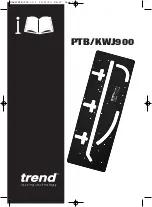
Safety
www.nationalequipment.com
Phone: 763-315-5300
7
spill, always check EPA, state and local regulations.
3. BURST:
Whether due to improper selection or damage, a ruptured hose can
cause injury. If it bursts, a worker can be burned, cut, injected or may slip and fall.
4. COUPLING-BLOW
OFF:
If the assembly is not properly made or installed,
the coupling could come off and hit or spray a worker, possibly resulting in serious
injury. Never operate machine without guards.
FLAMMABILITY
With the exception of those comprised primarily of water, all hydraulic fl uid is fl ammable
when exposed to the proper conditions (including many “fi re-resistant” hydraulic fl uids).
Leaking pressurized hydraulic fl uids may develop a mist or fi ne spray that can fl ash or
explode upon contact with a cause of ignition. These explosions can be very severe and
could result in serious injury or death.
Precautions should be taken to eliminate all ignition sources from contact with escap-
ing fl uids, sprays or mists resulting from hydraulic failures. Sources of ignition could be
electrical discharges (sparks), open fl ames, extremely high temperatures, sparks caused
by metal -to -metal contact, etc.
HYDRAULIC FLUID
Only use Texaco Rando 46 Hydraulic Oil or Compatible Fluid like IS032. Non-compatible
fl uids could cause damage to unit or serious injury.
GROUNDING
Tools marked “Grounding Required” have a three wire cord and three prong grounding
plug. The plug must be connected to a properly grounded outlet (Figure A). If the tool
should electrically malfunction or break down, grounding provides a low resistance path
to carry electricity away from the user, reducing the risk of electric shock.
The grounding prong in the plug is connected through the green wire inside the cord to
the grounding system in the tool. The green wire in the cord must be the only wire con-
nected to the tool’s grounding system and must never be attached to an electrically “live”
terminal.
Your scraper must be plugged into an appropriate outlet, properly installed and grounded
in accordance with all codes and ordinances. The plug and outlet should look like those
in Figure A.
FIG. A
CAUTION:
NEVER USE YOUR HANDS TO CHECK FOR LEAKS OVER HOSE
OR HYDRAULIC CONNECTIONS. USE A PIECE OF CARDBOARD TO LOCATE
A PRESSURIZED LEAK. FOR LOW PRESSURE LEAKS (DRIPS), USE A RAG TO
CLEAN THE AREA AND DETERMINE WHERE THE LEAK ORIGINATES.
WARNING:
IMPROPERLY CONNECTING THE GROUNDING WIRE CAN
RESULT IN THE RISK OF ELECTRIC SHOCK. CHECK WITH A QUALIFIED ELEC-
TRICIAN IF YOU ARE IN DOUBT AS TO WHETHER THE OUTLET IS PROPERLY
GROUNDED. DO NOT MODIFY THE PLUG PROVIDED WITH THE TOOL. NEVER
REMOVE THE GROUNDING PRONG FROM THE PLUG. DO NOT USE THE TOOL
IF THE CORD OR PLUG IS DAMAGED. IF THE PLUG WILL NOT FIT THE OUTLET,
HAVE A PROPER OUTLET INSTALLED BY A QUALIFIED ELECTRICIAN.







































